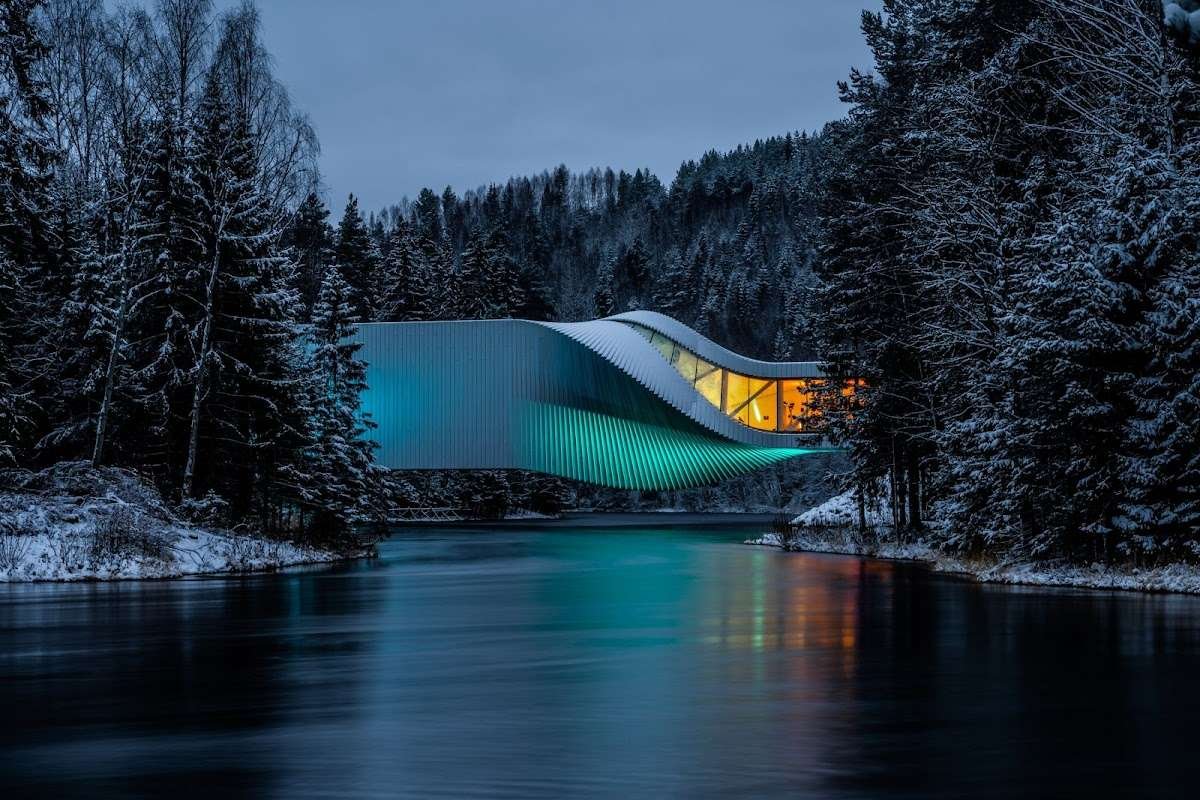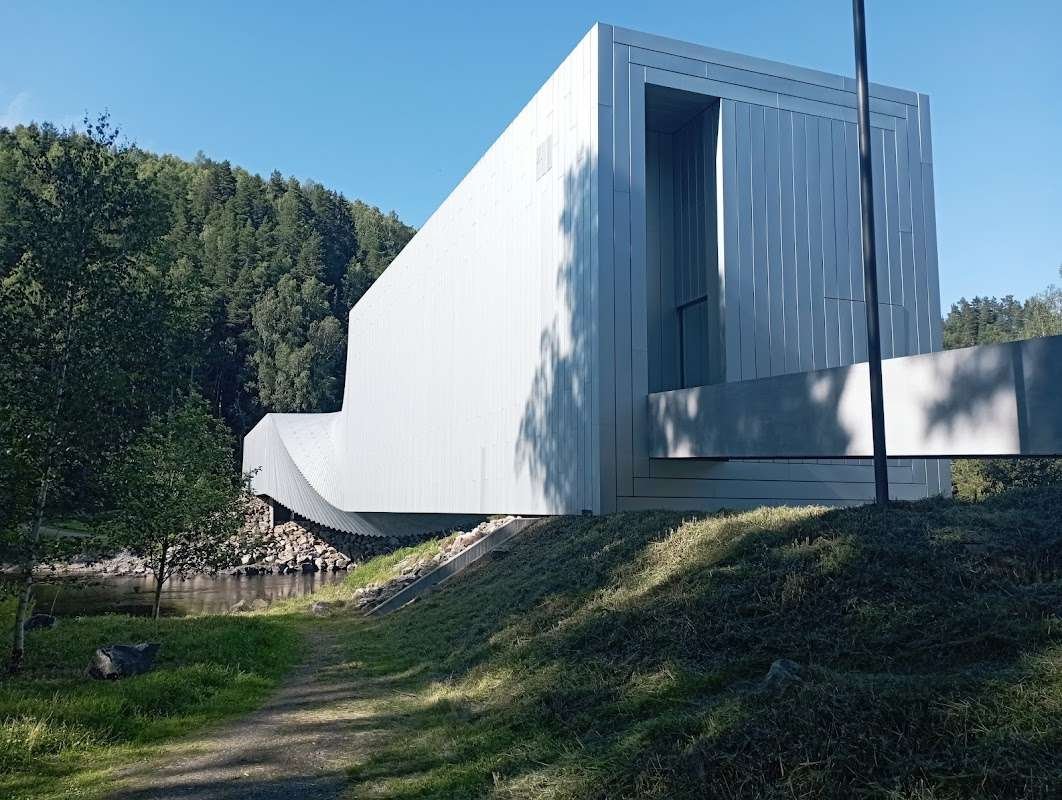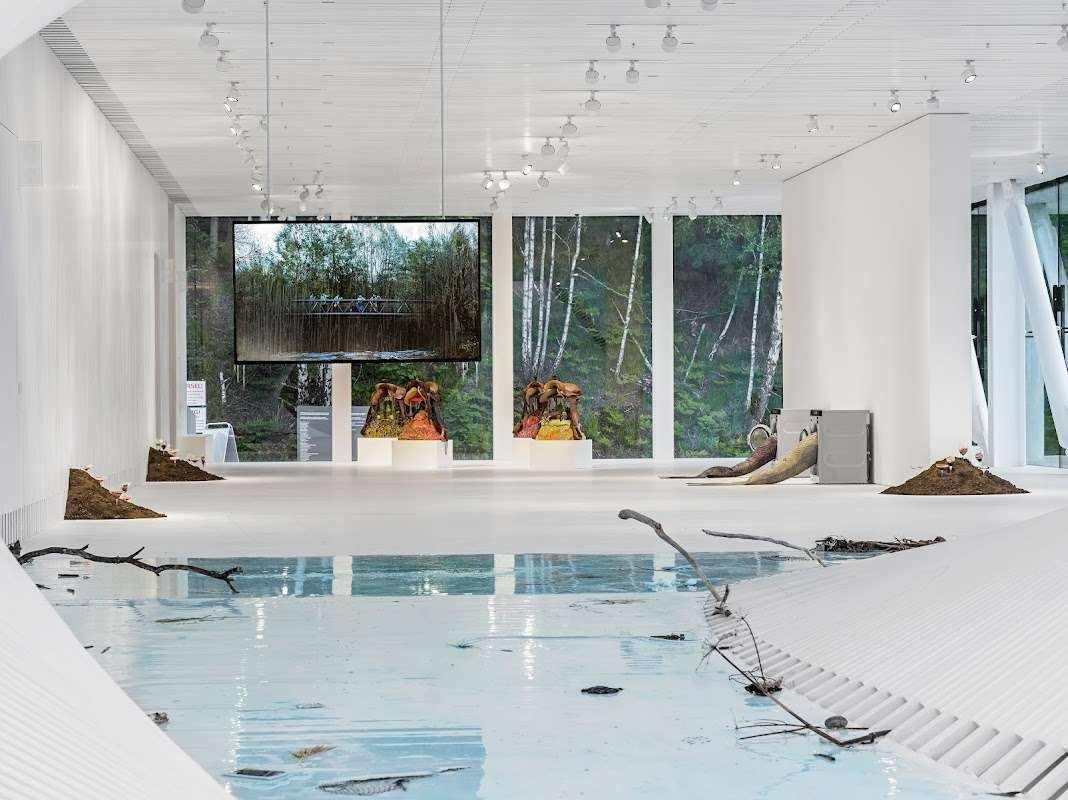Oslo on the cutting edge: where to see contemporary art and architecture — from the National Museum – Architecture to The Twist
Contemporary art in Oslo is not just about exhibitions, but also about buildings that are manifestos in themselves. In the heart of the city, you'll find the National Museum – Architecture in the historic Bankplassen, where the classic Grosz and Sverre Fenn pavilion come together in a truly spectacular way under one roof. On the Tjuvholmen waterfront, the stunning wooden and glass Astrup Fearnley complex designed by Renzo Piano is a real showstopper! A little further away, you'll find the incredible MUNCH museum tower, standing tall and proudly cutting through the stunning Bjørvika skyline. Just an hour's drive from the capital is the incredible The Twist in Kistefos, a truly unique destination where you'll find everything you could possibly want: a gallery, a bridge and sculptures – all in one place! This guide will show you how to combine these sites into one easy-to-follow route.

What is the National Museum – Architecture and why is it interesting?
It is part of the National Museum on Bankplassen, where the old Norges Bank building (designed by K. H. Groch) "meets" the modern pavilion by Sverre Fenn, winner of the Pritzker Prize. The exhibitions change, showing Norwegian and international architecture through drawings, models, photos and research. The building itself is a perfect example of this: the classic volume quietly "talks" to Fenn's light glass and concrete pavilion, offering a rare chance to see architecture both as an object and as a space.
How does NMA–Architecture go well with the "big" National Museum?
The main building of the National Museum is where you'll find art, design and architecture all in the same place. It has the country's largest collection and a huge permanent exhibition called The Collection. The branch on Bankplassen focuses on architecture and research exhibitions. The "big" museum has a wider focus, covering painting, fashion and product design. You should visit both the theory and case studies at NMA, as well as the art on display in the main building.
Which places in Oslo show the city's high standards of modern art?
Two buildings on the water are the Astrup Fearnley Museet on Tjuvholmen and Kunstnernes Hus near the Palace. Astrup Fearnley is a private museum of modern art. It is next to a Renzo Piano building with a sculpture park and bridges you can walk on. Kunstnernes Hus is a historic artists' house from 1930. It is an example of the change from neoclassicism to functionalism. Today, it is an active exhibition space and cinema. Together, they show a wide range of what Norway has to offer and how it compares to the rest of the world.
Why should architecture lovers visit the Astrup Fearnley building?
Renzo Piano's design consists of two wooden buildings separated by a canal and covered by a large glass "sail" roof. The space feels like an extension of the waterfront: you walk along the footbridges, see the fjord and enter the gallery without a clear separation between the "museum" and the "city". The combination of wood, light rafters and panels makes the museum recognisable and very typical of the Oslo style. It is a great example of how architects are turning old port sites into new areas of the city.
What is The Twist in Kistefos and why has it become so popular?
The Twist is a gallery, bridge and sculpture all in one. There is 1,000 square metres of exhibition space that goes across a 60-metre stretch over the Randselva river. The project by BIG – Bjarke Ingels Group – is simple. It connects the banks of the sculpture park and gives visitors a new experience of movement. This is achieved by turning the hall itself into an exhibition. It is a short and simple gesture that has quickly become popular.

Can you really combine The Twist with a day of modern art in Oslo?
Yes, Kistefos in Eivakker is about an hour's drive from Oslo. You can easily visit it on a day trip after you've been to the museums in the city. There is also a sculpture park with more than 50 works by famous artists like Kusama, Eliasson, Kapoor and Kragge. There are old factory buildings and a waterfall too. You will enjoy the building, but you will love the park and the exhibitions inside The Twist too.
Where in Oslo can you see the best examples of "design as culture", like furniture, textiles and glass?
The National Museum has a permanent exhibition called The Collection. It has paintings, costumes, furniture, ceramics, glass and contemporary design. There are dozens of rooms where you can see how materials and shapes are used in art. The textile collection is particularly impressive, ranging from historical fabrics to modern textile art. If you like crafts and modern art, this is a great place to start.
What is the 'Light Hall' at the National Museum, and why does it glow?
The Light Hall is a 2,400-square-metre space at the top of the building. The walls are made of 4-millimetre marble slabs laminated between glass. During the day, the hall lets in soft light, but at night it shines like a lantern. It is a place where there are temporary exhibitions, from the first "I Call It Art" exhibition (almost 150 people took part) to big international projects. The idea behind the format was to show how important today is, as well as how important yesterday is.
How is the MUNCH building different in terms of its design, and how does this affect how the art is displayed?
The MUNCH Tower (designed by Estudio Herreros) is a 13-floor museum that covers an area of around 26,300 square metres. The building's perforated aluminium facades and its "slope" make it a well-known part of Bjørvika. Inside, there are large "black boxes" for media and huge canvases. This layout lets the museum host big installations and talk with modern artists. Munch isn't "preserved" but is part of a living scene.
If you're looking for something a bit different, away from the well-known museums, this is the place to go.
Go to Kunstnernes Hus, a 1930s building (designed by Gudolf Blakstad and Herman Munthe-Kos) and winner of the Hoen Prize. It regularly hosts art exhibitions, shows experimental films and has discussions about art, which makes it a great place to see what art trends are happening. The building itself is an important example of how Norwegians combine strict form (how it looks) and clear function (how it is used).
How can you see the best of modern Oslo in just one day?
Today we are going to visit the NMA (National Museum of Architecture) on Bankplassen. There we will learn about the history of architecture and the Fena Pavilion. Afternoon — Tjuvholmen waterfront with Astrup Fearnley and a walk along the piers. Evening — MUNCH in Bjørvika: visit the permanent exhibition halls and enjoy the evening panorama of the fjord. If you have a second day, add The Twist as an activity: it perfectly ends the discussion about architecture as art.
Why is The Twist not just a picture, but a real lesson in architecture?
The twist solves several problems at once: it makes the bridge level, turns it into a hall and changes how light is perceived — the ribs inside are sometimes horizontal, sometimes vertical. The route becomes an exhibition: you feel the space with your body, not just your eyes. It's unusual to see how engineering, landscape design and museum displays all come together in one place like this.

Oslo is truly a testament to the fact that contemporary art is not just the content, but also the form, of buildings. At NMA–Architecture, you'll discover the incredible mind of Norwegian architecture at its best. At Astrup Fearnley, you'll see how a museum is redefining a whole new city shore. And at MUNCH, you'll be amazed by how a vertical tower serves 'great art' today. The Twist in Kistefos is an amazing example of how a gallery can become a bridge – and even better, a bridge that can also become a gallery! Come, see, compare and plan your route – the world is your oyster!
We would absolutely love to hear your thoughts in the comments!
If you have any interesting photos, personal experiences or questions about the article, we would love to hear from you – please leave a comment! We can't wait to hear from you, because we're on a mission to create the most popular and useful blog about Norway!





1 comment
Log in to leave a comment